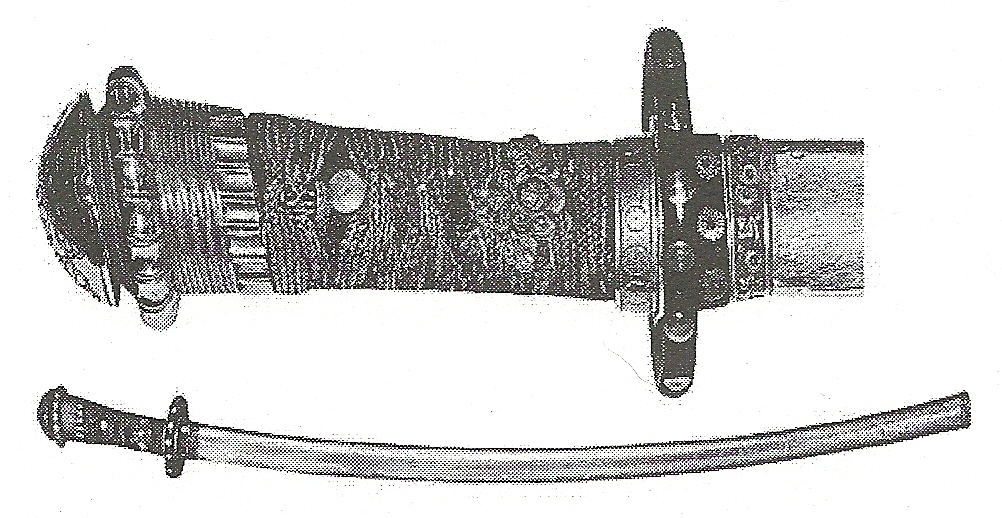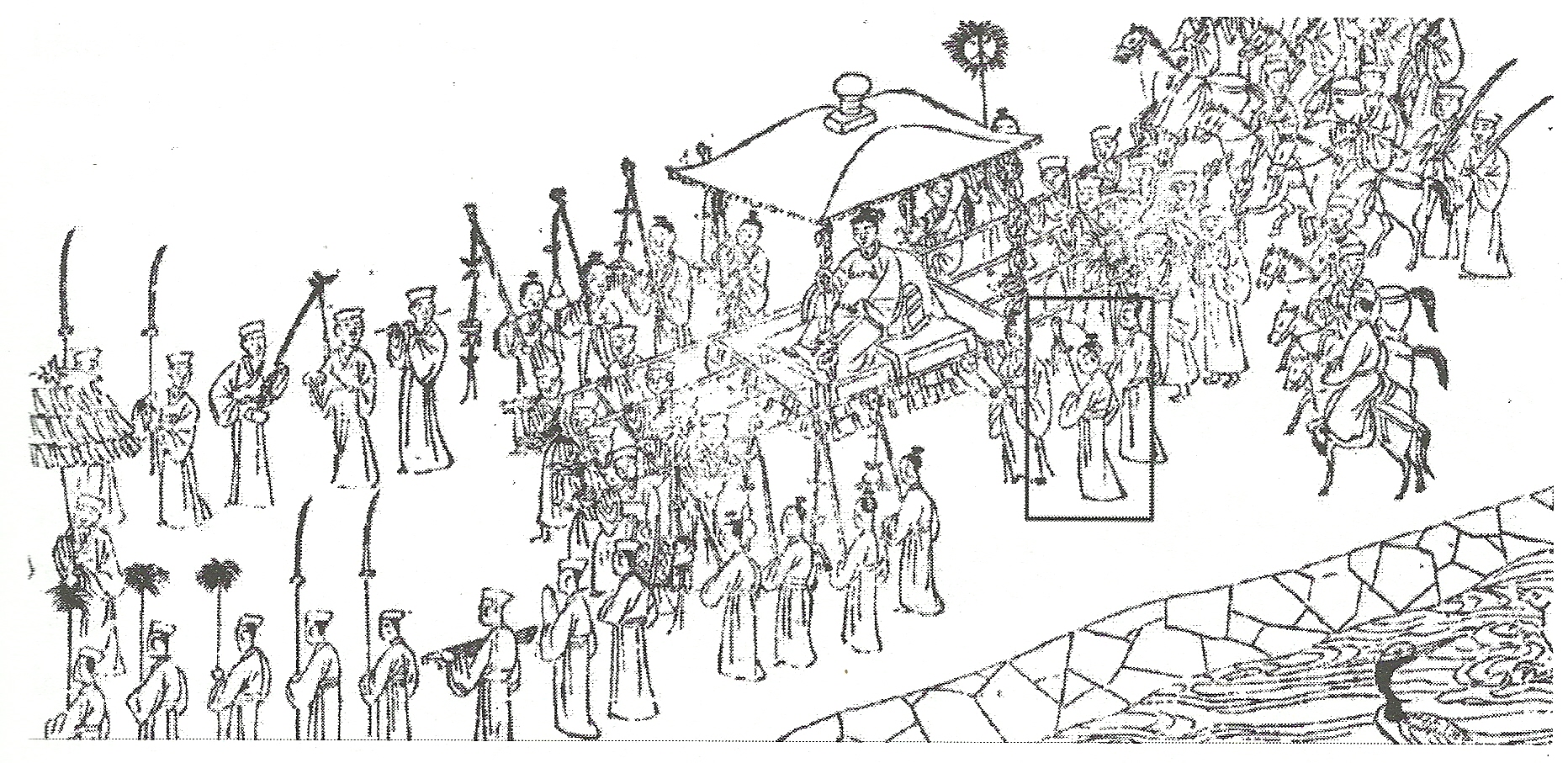May 26, 2018
|
From the mid-14th Century onward revolts in China by Fang Guizhen, Zhang Shicheng and others occasioned the relaxation of state controls on overseas trade in the late Yuan dynasty (1279-1368), triggering increased private commercial trade activities on the sea routes. At the time of King Han'anchi the petty kingdom of Hokuzan was a unique culture with weapons, fortification architecture, etc of a different design and origin than those of the other lords (anjii) of the Era of Three Kingdoms. The archeological records of the medieval forces of Nakijin reveal a certain ethnic and cultural heritage from the Alan Christian equestrian troops of Iranian and Turkish origin, which served the Juan dynasty in southern China.
One example for this is the Chiyoganemaru, an outstanding long sword well known for its intimate connection with the 1st and 2nd Royal Sho Dynasties of Ryukyu.

The sword is a curved blade, likely forged in Japan and refitted to be wielded one-handed. The hilt, along with the pommel and scabbard, both in gilded black lacquer, are believed to have been produced in Ryûkyû. The blade itself lacks any inscription, but the pommel features a chrysanthemum design, and the two-character phrase taisei (大世), referring perhaps to King Shô Taikyû, whose divine name was Taisei-ô. This sword came from the possession of Han'anchi, commander of forces at Nakijin. Among particularly noteworthy features of Chiyoganemaru are the single-handed hilt and its thin and gracefully curved blade. The blade was of Japanese design but the ornate sword mountings (koshirae) are of a peculiar design. According to the expertise of the late Okakura Kakuzou it is an excellent sword and in the Omoro it is praised as a "sword equipped with miraculous powers." |
According to the Ryukyuan official history Kyûyô, the defeated king of Hokuzan killed himself with this sword in 1416, when his kingdom was conquered by Chûzan. It is said that as his castle fell, Han'anchi used the sword to smash a sacred stone in the castle's utaki (central sacred space), and then committed suicide with the blade. He is said to have thrown Chiyoganemaru into the river as he died, after which it supposedly was carried by the currents to Iheya Island, where someone found it and gifted it to the kings of Chûzan.

Chiyoganemaru carried during a royal procession, 18th century Chiyoganemaru was handed down as a treasured sword within the royal Sho family of Ryukyu. In 1995 it was in the possession of the then family head, Sho Hiroshi (1918-1996). In 1996 the Sho family donated it to Naha City to be kept as a traditional cultural asset, and in 2002 it was designated an important cultural property as one of the Three Articles Handed Down by the Royal Sho Family of Ryukyu (Ryukyu Oke Shouke Denrai-bin). Furthermore, in 2006, together with two other swords and historical written materials, it was designated a national treasure within the Materials related to the Royal House of Sho of Ryukyu (Ryukyu Kokuo Shouke Kansei Shiryo).
Sources: ©2018 Contact: ClickOkinawa.com |
